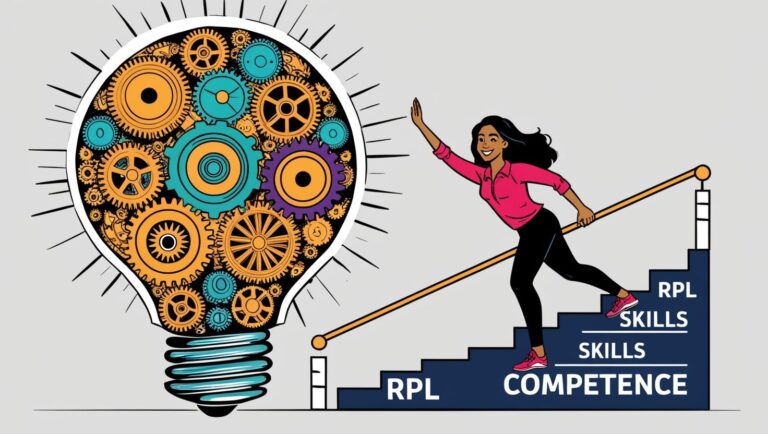Bloom’s Taxonomy for Adult Learners: Unlocking Cognitive Potential in the Workplace
When you hear the term Bloom’s Taxonomy, you might picture a classroom of young students, worksheets, and teacher evaluations. But here’s the truth: Bloom’s Taxonomy isn’t just for elementary schools. Its principles are incredibly relevant for adult learning, professional development, and workplace training.
For organizations that want to boost cognitive skills, improve problem-solving, and strengthen decision-making, understanding Bloom’s Taxonomy is essential. It provides a structured framework for designing learning experiences that build knowledge, understanding, and critical thinking.
In this article, we’ll explore the origins of Bloom’s Taxonomy, the cognitive domain, and how adult learners and professionals can leverage it to enhance their workplace skills.
The Origins of Bloom’s Taxonomy
In the 1950s, educational psychologist Benjamin Bloom and his team developed a hierarchical model for learning objectives. The goal was simple but ambitious: to categorize the different levels of human cognition and provide educators with a roadmap to guide learning.
Bloom’s work initially focused on school-aged learners, but it has since been adapted for adults and professional environments. Today, Bloom’s Taxonomy serves as a blueprint for designing training programs, evaluating skills, and improving workplace performance.
The taxonomy is divided into three domains: cognitive (thinking), affective (attitudes), and psychomotor (physical skills). For adult learning, the cognitive domain—which focuses on knowledge and intellectual ability—is the most widely applied.
Understanding the Cognitive Domain
The cognitive domain describes the mental skills we use to acquire, process, and apply knowledge. It consists of six levels, each building on the previous:
Knowledge (Remembering): Recalling facts, terms, and concepts.
Comprehension (Understanding): Grasping the meaning of information and interpreting it accurately.
Application: Using knowledge in real-world situations.
Analysis: Breaking information into parts to understand relationships and patterns.
Synthesis (Creating): Combining elements to form a new whole or propose solutions.
Evaluation: Making judgments based on criteria and evidence.
In a workplace setting, these levels translate to concrete skills: recalling company procedures, interpreting policies, applying processes to projects, analyzing data to solve problems, creating new solutions, and evaluating outcomes to improve performance.
Why Bloom’s Taxonomy Matters for Adult Learning
Adult learners are different from children. They bring experience, prior knowledge, and specific goals to the table. Applying Bloom’s Taxonomy helps adult learners structure their learning, deepen understanding, and make knowledge actionable.
Here’s why it’s particularly relevant in professional development:
Structured Growth: Employees progress logically from foundational knowledge to complex problem-solving.
Skill Retention: Learning is reinforced through application and analysis, not just memorization.
Enhanced Decision-Making: By reaching higher cognitive levels, employees develop critical thinking and judgment.
Workplace Relevance: Training connects directly to job tasks, improving performance and productivity.
By incorporating Bloom’s principles, organizations create learning experiences that build not only knowledge but practical intelligence.
Applying Bloom’s Taxonomy in the Workplace
So, how does an adult learner—or a workplace training designer—apply Bloom’s Taxonomy in practice? Let’s break it down step by step.
Step 1: Start with Knowledge
Before someone can perform a task effectively, they need to remember essential information. This could include company procedures, regulatory requirements, or industry terminology. For example, a new HR manager might need to recall employment laws, reporting procedures, and performance evaluation processes.
Step 2: Move to Comprehension
Once knowledge is acquired, learners need to understand it deeply. Comprehension involves interpreting rules, recognizing patterns, and making connections. Our HR manager, for instance, must understand how labor laws apply to everyday HR decisions and employee relations.
Step 3: Encourage Application
Understanding isn’t enough; the knowledge must be applied. Employees should practice using new skills in real-world scenarios. Case studies, simulations, and project-based learning are excellent ways to translate comprehension into action. Application ensures that learning directly impacts workplace performance.
Step 4: Develop Analysis Skills
Analysis requires breaking complex problems into smaller parts, identifying relationships, and understanding causes and effects. For example, the HR manager could analyze turnover trends to identify underlying causes and recommend solutions. This stage develops critical thinking and enhances problem-solving abilities.
Step 5: Foster Synthesis
At the synthesis stage, employees combine knowledge and insights to create new solutions or approaches. The HR manager might develop a new employee engagement program, integrating lessons learned from previous initiatives, team input, and industry best practices. Synthesis drives innovation and strategic thinking.
Step 6: Promote Evaluation
Finally, evaluation allows learners to assess outcomes, make informed judgments, and improve processes. Our HR manager evaluates the effectiveness of the engagement program, gathers feedback, and adjusts strategies for optimal impact. Evaluation ensures continuous improvement and accountability.
Practical Illustration: Bloom’s Taxonomy in Action
Imagine a mid-sized marketing firm introducing a new digital platform. Employees must learn technical processes, interpret data analytics, and optimize campaign performance. Using Bloom’s Taxonomy, the training program might look like this:
Knowledge: Employees memorize platform features and definitions.
Comprehension: They understand how each feature contributes to campaign success.
Application: Staff practice using the platform on sample campaigns.
Analysis: They analyze campaign results to identify trends and gaps.
Synthesis: Teams propose new strategies based on insights.
Evaluation: Managers assess the success of campaigns and recommend improvements.
This approach ensures that employees move beyond rote learning, gain practical skills, and contribute to business outcomes.
Benefits of Using Bloom’s Taxonomy for Adult Learners
Implementing Bloom’s framework offers multiple benefits for professional development:
Improved Learning Retention: Knowledge moves from memorization to understanding, application, and analysis.
Enhanced Critical Thinking: Employees develop the ability to solve problems strategically.
Stronger Performance: Training directly translates into workplace effectiveness.
Increased Confidence: Employees gain competence and are empowered to make decisions.
Adaptability: Workers learn how to evaluate and synthesize information, improving agility in a changing work environment.
By integrating Bloom’s Taxonomy, adult learners achieve measurable growth in both knowledge and practical capability.
Key Takeaways for Workplace Learning
To make the most of Bloom’s Taxonomy in professional settings:
Start with clear learning objectives: Define what employees need to know and what skills they should develop.
Structure training progressively: Move from foundational knowledge to higher-order thinking skills.
Incorporate practical exercises: Use case studies, simulations, and real-world applications.
Encourage reflection: Allow learners to evaluate outcomes, identify improvements, and adapt strategies.
Track progress: Measure performance, provide feedback, and celebrate achievements.
With these steps, Bloom’s Taxonomy becomes a practical, actionable tool for adult learning, rather than an abstract theory.
Final Thoughts
Bloom’s Taxonomy is far more than an educational relic—it’s a framework for professional growth, workplace learning, and cognitive skill development. For adult learners, understanding and applying the taxonomy can transform how knowledge is acquired, applied, and assessed in real-world work situations.
Whether you’re an HR professional designing training, a team leader developing staff, or an individual seeking to enhance your cognitive skills, Bloom’s Taxonomy provides a roadmap for success. It encourages progression from remembering and understanding to analyzing, creating, and evaluating—all critical capabilities in today’s dynamic workplace.
By leveraging Bloom’s principles, organizations and professionals alike can foster intellectual growth, practical skill development, and strategic thinking, positioning themselves for long-term success.



